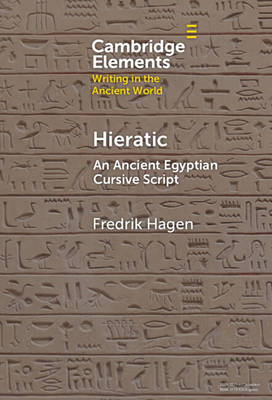
- Afhalen na 1 uur in een winkel met voorraad
- Gratis thuislevering in België vanaf € 30
- Ruim aanbod met 7 miljoen producten
- Afhalen na 1 uur in een winkel met voorraad
- Gratis thuislevering in België vanaf € 30
- Ruim aanbod met 7 miljoen producten
Zoeken
Omschrijving
Hieratic was the most widely used script in ancient Egypt, but is today relatively unknown outside Egyptology. Generally written with ink and a brush, it was the script of choice for most genres of text, in contrast to hieroglyphs which was effectively a monumental script. The surviving papyri, ostraca and writing boards attest to the central role of hieratic in Egyptian written culture, and suggest that the majority of literate people were first (and not infrequently only) trained in the cursive script. This Element traces the long history of hieratic from its decipherment in the nineteenth century back to its origins around 2500 BC, and explores its development over time, the different factors influencing its appearance, and the way it was taught and used.
Specificaties
Betrokkenen
- Auteur(s):
- Uitgeverij:
Inhoud
- Aantal bladzijden:
- 118
- Taal:
- Engels
- Reeks:
Eigenschappen
- Productcode (EAN):
- 9781009673655
- Verschijningsdatum:
- 14/08/2025
- Uitvoering:
- Hardcover
- Formaat:
- Genaaid
- Afmetingen:
- 152 mm x 229 mm
- Gewicht:
- 331 g

Alleen bij Standaard Boekhandel
+ 225 punten op je klantenkaart van Standaard Boekhandel
Beoordelingen
We publiceren alleen reviews die voldoen aan de voorwaarden voor reviews. Bekijk onze voorwaarden voor reviews.








